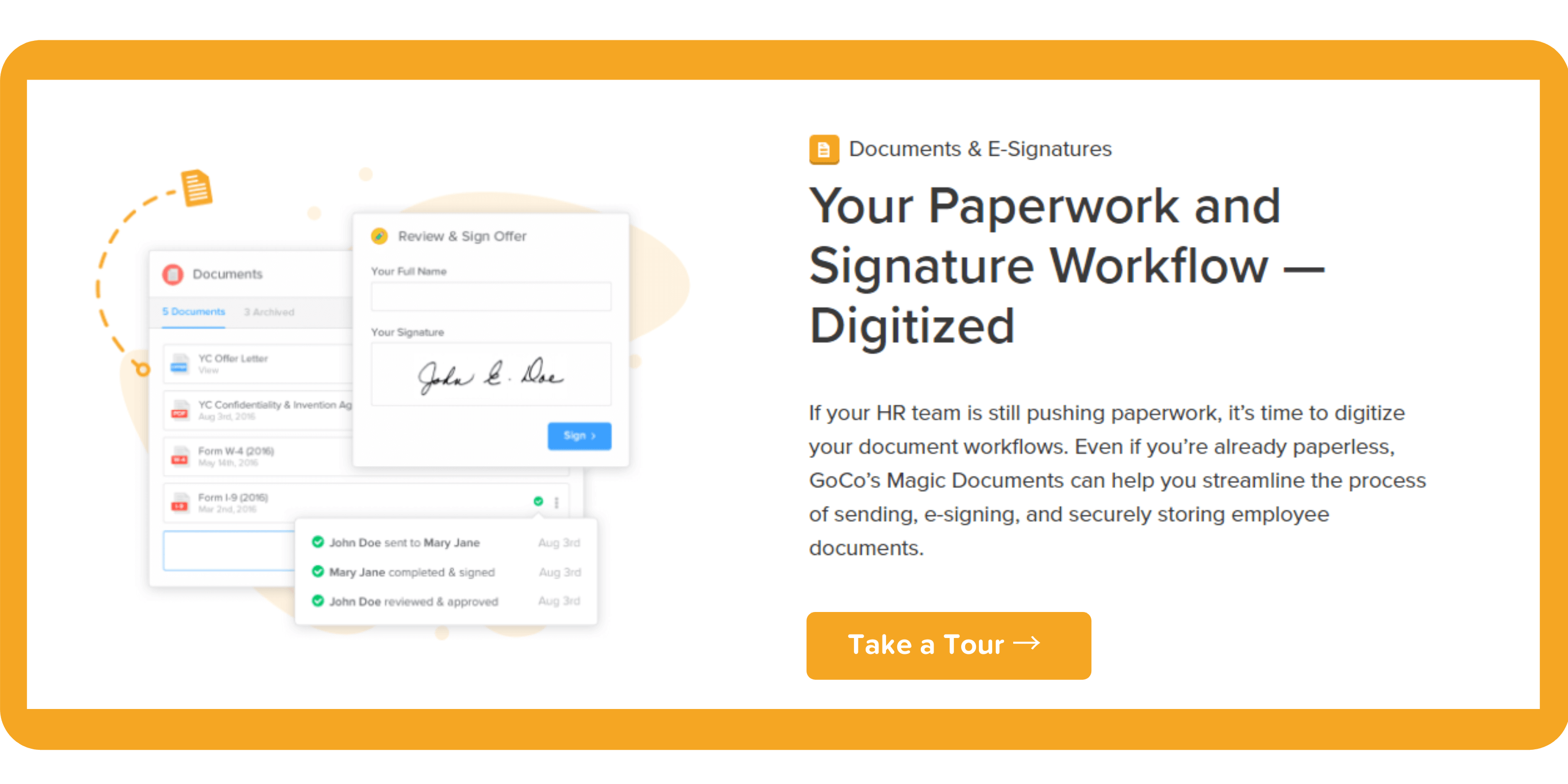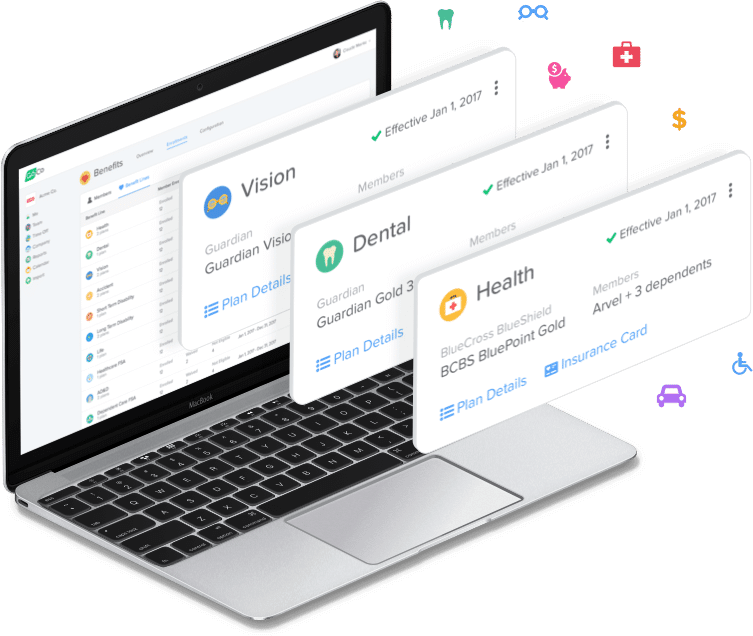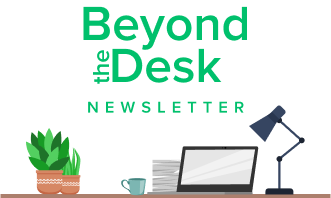5 Ways to Achieve a Paperless HR Department [2022 Update]
Going paperless in your HR department is the most convenient recordkeeping solution for human resources professionals.
January 22nd, 2022
It's time to face facts: with the ease of going paperless, your copy machine may soon be as outdated as the typewriter. Think about it--would you rather continue rummaging through your filing cabinet for that missing form, or type in a keyword that will pull up that form on your screen?
You deal with paperwork for a big majority of HR functions every day-- and all that paper tends to build up into a cluttered mess. Paperless solutions for onboarding, compliance, benefits, and a lengthy list of other functions will streamline all your responsibilities, declutter your office, and allow you to focus your time in core HR functions that otherwise would be trumped by data entry, printing, and filing.
A great way of approaching going paperless, is looking at all the benefits the company as a whole, not only HR, would get from it:
Save money while you save trees. Think of the money you needlessly spend on all that paper, not to mention mail, folders, sticky notes, file space, and all the other essentials of a paper-based system.
You could finally focus on other tasks that involve people's interactions rather than paper.
All HR functions can be managed in one place, instead of several spreadsheets and file cabinets, keeping you much better organized.
The information is safely stored in the cloud. By going paperless, HR can ensure that if a natural disaster happens, your records won’t be at risk. What filing cabinet on earth can do that?
Enhance collaboration, as employees can work together and share information digitally.
Let employees make changes on their own, and the system automatically updates the information everywhere it needs to be, instead of having to process even simple changes through HR. That’s the level of convenience of paperless HR.
If these benefits sound good to you, learn how to go paperless in your HR departmen by taking the following steps:
1. Utilize electronic signatures
We’ve all filled out a form on a computer only to find that we need to print it, sign it, and then scan it back in. These days, that’s no longer the case, thanks to the widespread use of electronic signatures.
It’s time for modern HR departments to jump on that bandwagon. Whether you choose a signature capture device (an electronic pad that you sign, like banks often have) or an even higher level of security, taking this step will simplify your life.
“The use of electronic signatures is becoming more common in human resources as employers find themselves in situations where hard-copy signatures are not practical, such as rolling out handbooks for 1,000-plus employees or handling open enrollment for employees spread across the country,” says the Society for Human Resource Management (SHRM).
Here are a few methods of using electronic signatures:
Standard e-signatures, which are typically authenticated using a single method, like verification of access to an email.
Enhanced e-signatures, involving multi-factor authentication (such as access to email and receiving a PIN by phone).
A digital signature (which lets you sign using a private key, a code that only you have). A certificate authority or other supervisory body authenticates these signatures.

Whichever method you choose, set clear company policies on the use of electronic signatures. That way, you’ll encourage their widespread use by minimizing confusion and uncertainty.
2. Automate your recordkeeping
Choosing the right system is one of the foundational steps to going paperless in your HR department. The right system makes all the difference, placing every piece of information at your fingertips.

Some fear that going paperless involves certain risks, like being hacked. But the reality is that the business world has been headed away from paper-based systems for a long time. By choosing a quality system and adopting protective measures--for instance, encrypting sensitive data and establishing a protocol for mitigating any security breaches--you’ll help keep your records safe and secure.
Here are a few key steps to automate your recordkeeping system:
Audit your needs for automation so you’ll know which repetitive processes can be best managed by a paperless HR software system. For example, managing onboarding can make sure nothing falls by the wayside.
Create a list of the categories your paperwork typically falls into (like compliance, benefits, payroll, and performance management), so you’ll know if a system covers all your bases.
Select a system that meets all those needs and, at the same time & limits access to sensitive information.
Work with IT professionals to ensure you have a robust plan for protecting sensitive data.
GoCo’s modern HR solutions help making paperless recordkeeping simple. With an automated system that stores records electronically, we’ll help you shift away from a reliance on paper while streamlining processes like onboarding and managing employee benefits. And we’ll make recordkeeping easier, more reliable, and better organized!
3. Teach staff how to go paperless
Show your team members how to navigate the elements of your automated system that they’ll need to access. A short training will show them how intuitive the system is and encourage them to use its features to make their jobs easier.
Share best practices on going paperless with each department, and mention the importance of sustainability and the role that going paperless plays in going green. Give them tips on choosing alternatives to paper. For instance, if they were going to give people a handout at a meeting, they could email a PDF file (which is mobile-friendly as well, so people can view it on their phones or tablets!).
Sharing these suggestions will make the transition more seamless.
4. Make using paper inconvenient
Make it a bigger hassle to use paper than to avoid using it. If you take away fax machines and printers, or make them less easy to access, you should minimize staff’s use of them.
But before you seize all the copy machines and lock them in a dark, know that a smooth transition is key. Let staff know well in advance that printers, scanners, and copiers will be phased out. Help them understand how to handle common tasks in a paperless world.
Strategically plan how to phase out these devices, too. Create a multi-phase plan that includes the following steps:
Discourage the use of these devices while they’re still available.
Eliminate the least-used devices.
Offer access only to the devices that are truly essential. If you use those essential devices fairly infrequently, consider placing them in a more out-of-the-way location so you don’t unintentionally encourage staff to use them when they don’t need to, as Inc. advises.
Meanwhile, you can help staff create desktop setups that make it easier to navigate through documents on the electronic system.
For example, having a dual monitor can help them compare documents more easily, as Inc. adds. Having more screen space will make going paperless feel much easier, making people less likely to run for the printer.
By considering the real reasons why people turn to paper, other than force of habit, you can present solutions that work just as well, if not better, than paper itself.
5. Don't let the change go unnoticed.
Do something to publicly commemorate the shift to a paperless HR department, explaining why it’s important--for example, writing about it in a company e-newsletter. Emphasize that you want to save trees as well as money, and paperless HR solutions are an important step in going green. Mention that in your next email to your clients, encouraging them to use electronic communications.
By emphasizing how going paperless benefits the planet, you’ll help get others on board. And you’ll brand yourself as a responsible company--which you are!
Paperless Office FAQs
How Do I Start Going Paperless in HR?
The first step to achieving a paperless HR department is to start with a plan. Every successful HR professional knows that planning is key to success, and it's no different for you.
You need to know what your goals are if you're going to achieve them. Are you trying to save money? Help the environment? Reduce office clutter? Once you've established your goals and timelines for achieving them, it's time for action!
How Do I Ensure My Employees Are Comfortable Going Paperless in HR?
Once you have a plan in place and are ready to go paperless, there are several things you can do to ensure your employees are comfortable with the transition.
First and foremost, educate them on why going paperless is beneficial for the company and them as individuals.
They'll be more likely to embrace this new process if they know that it will save time, money, and space—and also improve their job satisfaction by giving them access to files anywhere at any time!
Employees will be more likely to embrace this new process if they know it will save time and money for all involved. Ultimately, this will mean lower costs for the company (including yours) and increased efficiency for everyone involved.
How Do I Maximize Efficiency With a Paperless Hiring Process?
In addition to the essential functions of a paperless HR management process, there are several ways you can use technology to streamline your hiring and onboarding processes.
For example, If you want to ensure that your employees have room to grow and achieve professional goals, consider using digital tools like performance management software This will enable you to create a paperless performance review process that allows for real-time feedback from managers and colleagues. It also allows employees who have been underperforming or in danger of being let go an opportunity to receive feedback before it's too late.
Benefits administration, payroll, onboarding, and time tracking are just a few of the many HR tasks that become much more efficient while using a digital platform.
How Do I Automate Tasks and Processes?
Ensuring your employees are comfortable with the change is essential when introducing new technology. Train them in advance to get them on board and ensure they understand how to use the latest software.
Make sure that any new systems you implement will be efficient. This means looking at how long it takes an employee to complete a task manually and evaluating if there are ways to speed up this process through automation.
You can also look into whether there are any additional tools or strategies you could utilize to increase efficiency.
Utilize electronic signatures wherever possible to eliminate paper documents and reduce any errors caused by handwriting. This also saves you from having to retype information from handwritten documents into a computer system. Electronic signatures help protect against fraud because they're easier to verify, and they help prevent unintentional disclosure of sensitive information.
How Do We Stay Organized in an Increasingly Digital World?
A digital filing system is the best way to keep track of your documents, records, and other paperwork. This will be especially useful if you have a paperless human resources department.
It will help you manage your documents electronically rather than physically, which means they will be available wherever and whenever you need them.
The most important thing about having a digital filing system is that it must be easy to use and not bogged down by unnecessary features or functions—you should only have what's necessary to manage your business's documents and records effectively.
Save money, save trees, save headaches! After taking these steps, HR will have the freedom to focus on crucial responsibilities like staff engagement and retention, instead of recordkeeping and data entry.
If you're interested in implementing an HR system that will help you save time and paper, book a time to chat with us!

Subscribe to Beyond The Desk to get insights, important dates, and a healthy dose of HR fun straight to your inbox.
Subscribe hereRecommended Posts
Do’s & Don’ts for Building Trust with Remote Workers
Blog Articles
Search...
Product
GoCo
Resources
Articles
eBooks
Webinars
Customer Stories
![5 Ways to Achieve a Paperless HR Department [2022 Update]](/img/containers/assets/goco/featured_images/posts/5-Ways-to-Achieve-a-Paperless-HR-Department.png/14a71238db48cdd2ab27fca8d9ea71fd.webp)



